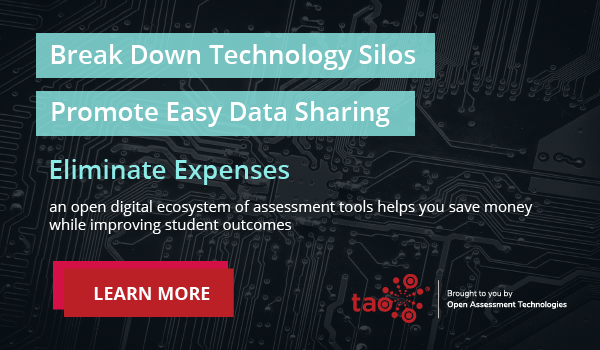Even before the coronavirus flipped the education system, many K-12 students participated in some form of hybrid or blended learning, even if they weren’t fully aware. Hybrid learning models use a mix of digital and non-digital learning tools in tandem. Before the pandemic, students likely used tablets or computers in class to complete activities or assessments, but our new reality has brought hybrid learning models to the forefront of education.
Teachers and students are returning to the familiarity of in-person instruction. Still, many schools have opted to adopt a hybrid model in which students spent part of their time learning in person and part of their time learning remotely. As instructors tackle rapidly changing tools, restrictions, and administrative changes, they’re quickly adopting hybrid teaching techniques and, in many cases, experimenting with various lesson plans and learning tools to find the best solution for their hybrid students.
Participation and engagement significantly impact student learning outcomes and teacher success. With students juggling traditional class time and new remote tools, teachers must explore new ways to promote and maintain engagement across two vastly different spaces. In this post, we’ll share five ways teachers can keep kids engaged in hybrid environments.
#1 Share the right material at the right time.
By now, teachers have realized that the same materials, activities, and lessons designed for in-person classes can’t merely be ‘moved over’ to a digital platform. Students can’t write on the board or team up with a classmate to build a 3D model in an online classroom. Instead, teachers must create lessons and assessments, especially for remote learning. This realization drastically impacted how fully remote classes functioned last spring, but educators should carry this mindset over into hybrid learning as well.
Consider which parts of each lesson are the most appropriate for each learning environment, and ensure your lesson plans complement where students will be during class. For example, assign content delivery like reading or research tasks when students are home, then maximize your time in person with discussion time and critical thinking activities that reinforce what they worked on the day before. This gives each child time to read and absorb new material at their own pace and helps you make the most out of limited class time. Here’s a quick guide to which lessons work best in each learning space:
In class, focus on:
- Discussions and hands-on lessons
- Supervised lab activities
- Individual time for students who need extra support
In remote learning, focus on:
- Reading, writing, or filling out worksheets
- Watching pre-recorded, self-paced lectures
- Researching newly introduced concepts
#2 Give students an active role in the learning experience.
Hybrid classrooms inevitably require students to practice individual learning. While this can seem like a lofty challenge for students, teachers, and parents, it can also open up new opportunities and motivate students to take an active role in their learning experience.
Hybrid students can pace themselves when learning new material at home, and they’re primarily accountable for how well they listen and absorb each lesson. Since they don’t feel pressured by the confines of a 50-minute class or impatient students asking to move on to the next topic, they can slow down and take in materials however they prefer.
Encourage students to take their time with each lesson and assessment, then jot down which concepts they a) enjoyed the most, b) feel most confident in, or c) wish they understood better. This independent learning style helps inform teaching strategies, but adaptive learning tools also help students lean into their strengths interests more than they would in a typical classroom. Students can learn at their own pace, explore topics of personal interest, then test their knowledge with an intuitive assessment that personalizes each question to the test taker based on previous responses, engagement levels, and learning style.
#3 Stay connected in and out of class.
Communication significantly impacts student engagement and eventual learning outcomes. When students aren’t in the classroom every day, they can easily fall out of touch with their teacher and peers. Suppose students don’t know how or don’t feel comfortable contacting their instructors online. In that case, they risk falling behind or becoming discouraged, which will likely lead to poor participation in classroom activities later on.
Establish clear lines of communication across learning environments. Use digital tools like message boards, chatrooms, and virtual conferencing to connect students when they can’t meet in person. This maintains a sense of community on remote days and helps students get comfortable sharing their thoughts and ideas in a low-pressure setting.
Additionally, make sure students know how, where, and when to contact a teacher on the days they’re learning remotely. Giving them reliable accessibility tools and the know-how to get in touch encourages them to reach out when they need support. Teachers should also establish a feedback culture for exams and assessments so students can find and respond to comments in a timely manner.
#4 Adjust lessons based on student performance.
Perhaps the greatest challenge of hybrid learning lies in how teachers assess their students’ engagement and understanding of each learning concept. When students watch a video or read a book chapter at home, teachers have little insight into which areas they understand and where they may be struggling. Unfortunately, without further guidance, teachers won’t have good insight into student performance until high- stakes exam grades come back, leaving some students far below the class average or behind the learning curve.
To protect student learning outcomes and teaching strategies, educators should implement formative testing tools across both learning environments to gauge student performance and adjust lesson plans accordingly. Formative assessments measure student learning throughout a semester or academic year. These tests typically don’t impact final course grades, but they deliver high value for teachers and students in other ways.
With formative assessment, teachers gain detailed insights into strengths and problem areas on both an individual and class level, with engaging prompts that ask students to explain a concept in their own words, illustrate how a set of terms relate, or brainstorm ideas for an upcoming essay.
Instead of taking their ‘best guess’ at a multiple voice question or regurgitating terms out of a textbook, students think critically about what they’ve studied in class and consider how in-class concepts apply to the outside world. Teachers then use these responses to adjust their lessons or teaching techniques as the course progresses to promote better learning outcomes for each student.
#5 Invest in reliable digital tools.
As educators and students adjust to the new normal of K-12 education, they need innovative digital tools that promote engagement, monitor performance, and drive success for both parties.
While some learning still happens in person, digital assessments hold high values for students and teachers alike. Choose an online testing tool that supports formative and graded exams with personalization technology, automatic grading, and advanced data reporting to inform teaching strategies and student learning outcomes.
TAO offers configurable assessment solutions for reliable testing, monitoring, grading, and data collection in and out of a physical classroom. Plug TAO into an existing digital platform or create a new assessment solution from the ground up.
To learn more about digital assessment tools for hybrid learning, contact us today.


